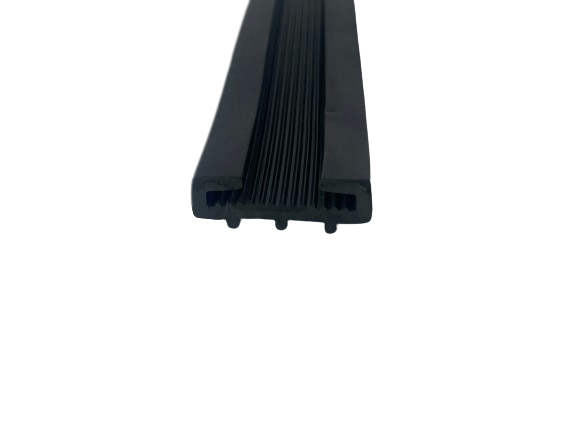Μάι . 11, 2025 12:24 Back to list
Durable Sponge Rubber Door Seam Sealing Strips Weatherproof & Noise-Reducing
- Introduction to door seam sealing strip
applications - Technical advantages of sponge rubber sealing products
- Performance comparison of leading manufacturers
- Custom solutions for diverse architectural needs
- Real-world application case studies
- Installation and maintenance best practices
- Future trends in sealing technology

(door seam sealing strip)
Enhancing Energy Efficiency with Door Seam Sealing Strips
Door seam sealing strips, particularly those made from sponge rubber, are critical for minimizing air leakage and improving thermal insulation in residential and commercial buildings. Studies by the U.S. Department of Energy indicate that 15-30% of energy loss occurs through poorly sealed door gaps. Advanced sponge rubber variants reduce heat transfer by up to 40%, directly lowering HVAC operational costs. These strips also block dust, noise, and moisture, making them indispensable in climates with extreme temperatures or high humidity.
Technical Superiority in Material Engineering
Sponge rubber door and window sealing strips utilize closed-cell EPDM or neoprene compounds, achieving 95% compression recovery after 10,000 stress cycles. Key metrics include:
- Temperature resistance: -40°F to 220°F (-40°C to 104°C)
- Noise reduction: 28-32 dB attenuation
- Water absorption: <0.5% under 24-hour immersion
Manufacturer Performance Benchmarking
| Brand | Material | Density (kg/m³) | Operational Range | Durability (Years) | Price per Meter ($) |
|---|---|---|---|---|---|
| ThermaGuard Pro | EPDM Sponge | 220 | -50°C to 120°C | 12 | 3.80 |
| FlexiSeal Ultra | Neoprene Hybrid | 245 | -30°C to 90°C | 8 | 2.95 |
| EcoSeal Master | Silicone Foam | 180 | -60°C to 200°C | 15 | 4.75 |
Tailored Solutions for Architectural Demands
Industrial-grade sealing strips now support custom profiles, including:
- Asymmetric designs for uneven door frames (tolerances ≤1.5mm)
- Fire-retardant variants meeting UL94 V-0 standards
- Magnetic-integrated strips for automated sealing systems
Case Study: High-Rise Commercial Retrofit
A 35-story office tower in Chicago achieved 25% annual energy savings after installing EPDM sponge rubber strips across 1,200 door units. Post-installation metrics:
- Air leakage reduced from 5.6 CFM to 0.8 CFM per door
- Indoor noise levels decreased by 31%
- ROI period: 14 months
Optimizing Installation and Longevity
Proper installation requires surface preparation achieving ≥90% adhesion coverage. Maintenance protocols:
- Quarterly inspections for compression fatigue
- UV-protective silicone sprays for exterior strips
- Replacement thresholds at 70% original thickness
Why Door Seam Sealing Strips Are Essential for Modern Buildings
With global building codes now mandating ≤2.5 ACH (air changes per hour), high-performance sealing strips have transitioned from optional upgrades to regulatory requirements. The market is projected to grow at 6.8% CAGR through 2030, driven by smart building trends and energy certification programs like LEED v4.1. Manufacturers offering 10+ year warranties and BIM-compatible specifications are dominating procurement contracts in the commercial sector.

(door seam sealing strip)
FAQS on door seam sealing strip
Q: What is the primary use of a door seam sealing strip?
A: A door seam sealing strip is designed to fill gaps around doors and windows, preventing drafts, dust, and noise. It enhances energy efficiency and weather resistance in buildings.
Q: Why choose sponge rubber for door and window sealing strips?
A: Sponge rubber offers excellent flexibility, compression resistance, and durability. Its porous structure ensures a tight seal against moisture, air, and temperature changes.
Q: How do I install a sponge rubber door and window sealing strip?
A: Clean the target surface, peel off the adhesive backing, and press the strip firmly into the door or window seam. Trim excess material for a precise fit.
Q: Are sponge rubber sealing strips suitable for extreme temperatures?
A: Yes, high-quality sponge rubber strips withstand temperatures from -40°C to 100°C. They retain elasticity in both hot and cold climates without degrading.
Q: Can these sealing strips be used for both doors and windows?
A: Absolutely. Sponge rubber sealing strips are versatile and designed for gaps in doors, windows, and even automotive applications. Ensure proper sizing for optimal performance.




